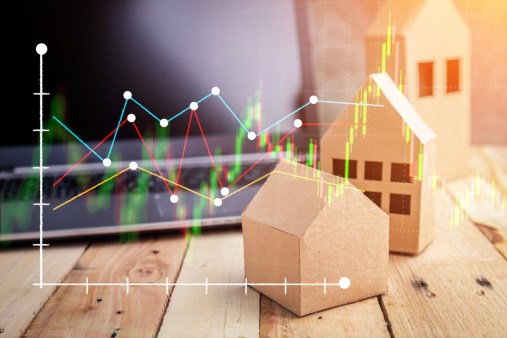Following our look at how the market fared in March, changed government policies aimed at combating the COVID-19 crisis have started to influence transaction numbers, but the April figures from Australia’s housing market have yet to reflect the downturn in prices anticipated by some banks.
While the introduction of social distancing measures in mid to late March placed a solid dent in consumer confidence, housing values rose across Australia once again – albeit against the backdrop of a sharp drop in real estate agents’ transactions measuring approximately 35%.
According to CoreLogic, the monthly pace of growth halved, which was not surprising given the circumstances. Nonetheless, housing values still managed a national lift of 0.3% across the month; in part influenced by a larger than normal seasonal reduction in the number of homes for sale across the country.
As we move into the winter quarter this listings shortfall is likely to continue, helping mitigate house price declines in specific locations, and, with reportedly strong interest in currently available stock, Australia’s confidence in the real estate sector seems less shaken by COVID-19 than confidence in other asset classes.

Capital cities weaker than regional markets
The combined capital cities index rose 0.2% in April, which compares with a 0.5% rise across the combined regional markets. The sharpest reversal in growth conditions was experienced in Melbourne, where values nudged into negative territory through April – down 0.3%. Sydney’s values remained positive, rising 0.4% over the month. Placing this in context, the six months prior to March saw both cities averaging a monthly growth rate around 1.7%.
Higher risk due to overseas migration
According to CoreLogic, Sydney and Melbourne arguably show a higher risk profile relative to other markets due to their larger exposure to overseas migration as a source of housing demand, along with greater exposure to the downturn in foreign students, stretched affordability and already low rental yields – which are likely to reduce further on the back of rising vacancy rates and lower rents.

Seller activity falling
While total auction sales volumes have reduced significantly as a result of four weeks of on-site auction bans, NSW, WA and the NT governments had just rolled back their restrictions at the beginning of May – and other states are anticipated to follow suite through the month.
Clearly, many potential vendors have held back their listings, in much the same way the market normally experiences prior to state and federal elections. However, many will also be taking mortgage holidays and the true test of the market’s resilience will come when these relief periods end.
How much might house prices fall as a result of COVID-19?
CoreLogic estimates that house prices may decline around 10% from peak to trough, but the rental market will suffer greater falls of 15% or more. CoreLogic head of research Tim Lawless says ‘chances are we still see housing values remain relatively resilient to this downturn as long as Coronavirus is contained within three to six months’.

Whilst the lingering effect on the market is not yet known, positive signs have began to show in the broader community, as Australia works to slow the spread, giving further hope that the market will remain resilient, so long as containment of the virus continues at a manageable pace.
DISCLAIMER
The following advice is of a general nature only and intended as a broad guide. The advice should not be regarded as legal, financial or real estate advice. You should make your own inquiries and obtain independent professional advice tailored to your specific circumstances before making any legal, financial or real estate decisions. Click here for full Terms of Use.

